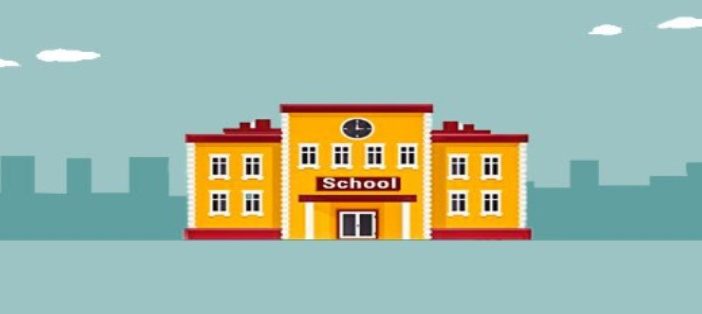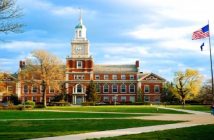Nearly 10 months after schools across the country shuttered as the coronavirus pandemic took hold in the U.S., researchers are finally amassing enough data to draw more informed conclusions about whether and how the virus spreads in schools, whether schools are significant drivers of infection rates and what conditions may allow for schools to safely and successfully reopen for in-person learning.
That data has been difficult to come by due to a lack of federal guidance for how states, counties and school districts track COVID-19 cases, which has led to a patchwork of reporting requirements – some of which are made public, others not – that have stymied efforts to draw any concrete conclusions to help city and school officials making complicated and contentious decisions about reopening and closing schools.
Now, a 60-page study published recently by seven academic researchers links county-level COVID-19 infections in Michigan and Washington state to information on how school districts were offering instruction – in-person, hybrid or remote – in order to assess the relationship between in-person instruction and the spread of COVID-19. Their conclusion: As long as infection rates are under control, in-person school, whether it’s through a hybrid model or fully in-person, does not contribute to community spread.
“What I think we show is that in Michigan and Washington we just don’t find evidence that districts that offer in-person school contribute to community COVID spread if there are low to moderate levels of preexisting COVID infections in the surrounding areas,” says Katharine Strunk, an education policy and economics professor at Michigan State University, as well as the director of the school’s Education Policy Innovation Collaborative.
The study is filled with caveats and the findings, though significant, are nuanced.
For example, while various types of in-person instruction were not associated with increased spread of COVID-19 at low levels of preexisting cases in the community, spread did increase in communities with moderate to high preexisting virus rates.
“This is what epidemiologists have been saying all along,” Strunk says. “Once community spread becomes out of control, then you need to start thinking about whether or not any public spaces are safe. And schools are just that.”
One of the most important cautions the researchers delivered is that in school districts offering some type of in-person instruction, only about half of students choose that option, according to previous analyses the researchers have done. That means, for example, if a school district is considering reopening for in-person learning every day, for all students, the results of this particular study may not be applicable considering the number of students, staff and space constraints.
In addition, adhering to recommendations from the Centers for Disease Control and Prevention- CDC and public health experts that schools should ensure staff and students wear masks, stay socially distanced and wash hands often, is paramount to curbing spread.
“The more mitigation factors that schools are taking – social distancing, mask wearing – those are the kinds of things that can help schools and districts remain open in-person, even in the face of spread. I think that’s critical.”
In an attempt to account for all the varying ways community spread is affected, researchers factored into the analysis specific safety mandates schools enforced, the demographics of the population and the politics of the community.
“I think what we find has a lot of nuance,” Strunk says. “We can’t say what is the right threshold of community spread for states or localities making decisions. There may be trade-offs between risks and the consequences of keeping students out of school buildings for learning loss and mental and physical health, and these trade-offs may differ by state and local context.”
The school reopening debate has been a political nightmare, as local, school and public health officials weigh the benefits of keeping schools closed to curb the spread of the coronavirus with the serious academic, social and emotional learning loss, which is borne disproportionately by Black, Latino and Native American students.
“We try pretty carefully to say, ‘Look, we are not epidemiologists, we’re not health care experts and every context is different,'” she says. “But what we want people to start thinking about is putting some data behind the conversation about school reopening and school closures so that when these decisions are made it’s not just politically or ideologically based, but it’s actually based on evidence.”
As it stands, about half of the country’s 50 million public school students are still learning virtually or through a hybrid model where they attend school for in-person learning two or three days per week. Students in big city school districts are more likely to be distance learning.
While infections continue to rise among school-aged children – they currently account for about 10% of all COVID-19 infections, according to the CDC – evidence is mounting, including from this latest study, that while children can and do contract the virus in schools, schools are not the superspreader sites they were initially thought to be.
The Trump administration has been adamant that schools reopen for in-person instruction, regardless of a community’s infection rates – even going so far as to threaten withholding federal funds from those that don’t provide an in-person learning option. Yet relief from Congress to help schools afford reopening costs has been slow. Lawmakers finally passed a new round of stimulus funding Monday, which included $54 billion for K-12 schools.
President-elect Joe Biden, meanwhile, said he plans to get the country’s public school system up and running in his first 100 days, as long as Congress and states can provide the necessary funding to help them reopen.
Notably, Michigan is one of the few states where the governor has mandated substantial restrictions on public gatherings at restaurants and bars – and has been vilified by conservatives for doing so – with the specific goal of keeping schools open. Other states have opted for keeping restaurants and bars open while closing schools.
“I think what this paper shows is that’s what’s necessary,” Strunk says of Michigan’s commitment to keeping schools open by closing other public spaces in order to keep the community spread at bay. “If you want to have schools open in person you need to keep rates of community spread relatively low.” ♦
(The story originally published by usnews)




